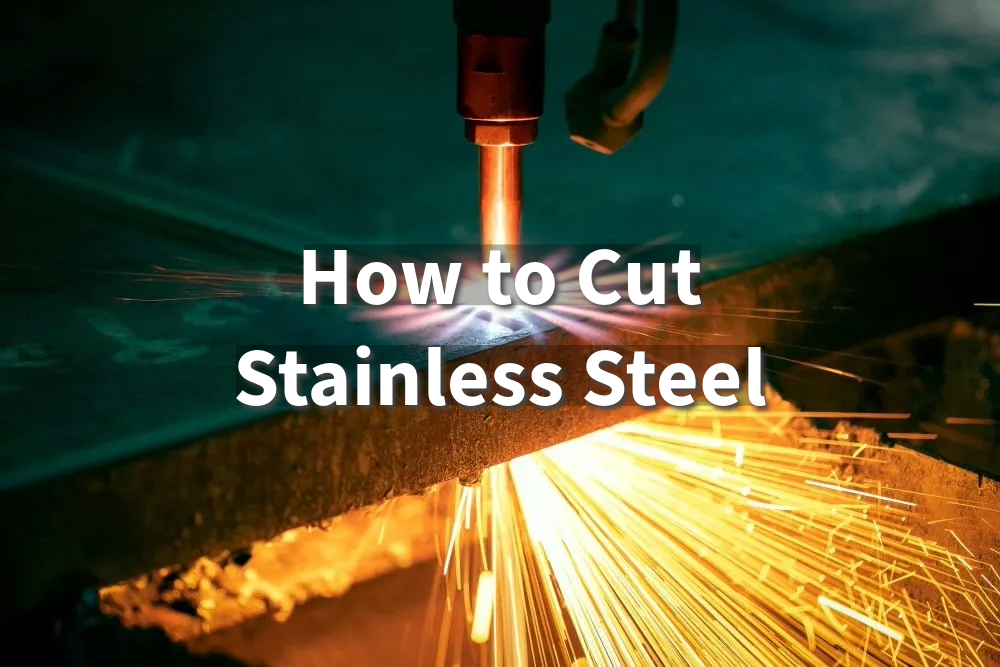How to Cut Stainless Steel: Sheet, Tube & Pipe Made Easy

Learn effective methods for cutting stainless steel sheets, pipes, and tubes. Discover tools and techniques for clean, accurate cuts in stainless steel.
Introduction
Stainless steel is a strong metal that doesn’t rust easily, which makes it great for many uses—from building materials to kitchen appliances. But because it’s so tough, cutting stainless steel can be tricky if you don't use the right tools and methods.
Using the correct tools and techniques is very important to get clean cuts without damaging the metal. Whether you’re cutting stainless steel sheets, tubes, or pipes, each type needs a different approach to make sure the cuts are safe and precise. This guide will show you the best ways to cut stainless steel so you can do it easily and safely.
How to Cut Stainless Steel
Cutting stainless steel well means knowing the right process and picking the right tools. The type of stainless steel—whether it’s sheets, tubes, or pipes—affects how you should cut it.
Things like how thick the metal is, how precise the cut needs to be, and the kind of cut you want all play a role in choosing the right tools and methods. Below, we'll cover the basics of cutting different types of stainless steel and what to consider.
How to Cut Sheet Metal
Recommended tools: angle grinders, power shears, and laser cutting
To cut stainless steel sheet metal, it’s important to use the right tools to get a clean, straight cut. Angle grinders work well for different thicknesses, while power shears are good for cutting thinner sheets. For very detailed and precise cuts, laser cutting is the best option because it’s accurate and won’t bend the metal.
Tips for Clean Cuts
Secure the sheet metal so it doesn’t move while you’re cutting.
Mark the cutting line clearly with a ruler or straight edge.
Use a steady speed to avoid jagged edges.
If you’re using an angle grinder, use a cutting disc made for stainless steel to get a smooth finish.
How to Cut Pipes and Tubes
Tools for pipe and tube cutting: tube cutters, reciprocating saws, and angle grinders
Cutting stainless steel pipes and tubes needs tools that can handle their round shape and give a clean cut without rough edges. Tube cutters are perfect for small pipes because they make precise cuts. For larger pipes, reciprocating saws work well, especially for thicker walls. Angle grinders can also be used for different pipe sizes.
Tips for Accurate Cuts
Secure the pipe or tube in a vise to keep it still while cutting.
Mark the cutting line all the way around the pipe for accuracy.
Cut slowly and steadily to keep control and get a clean cut.
After cutting, use a deburring tool to remove any sharp edges for a smooth finish.

Safety Tips When Cutting Stainless Steel
Importance of PPE
When cutting stainless steel, wearing the right safety gear (PPE, Personal Protective Equipment) is very important. Safety glasses or a face shield protect your eyes from flying metal bits. Gloves help prevent cuts from sharp edges, and ear protection helps with the loud noise from power tools. Wearing long sleeves and pants can also protect your skin from sparks.
Cutting Stainless Steel Safely
Cutting stainless steel can create sparks, which can be dangerous if they catch something on fire. Make sure your workspace is free of anything flammable, and use a spark guard if you can. Cutting stainless steel can also be very noisy, so always wear ear protection. After cutting, handle the edges carefully because they can be sharp. Use a deburring tool to smooth the edges so they are safer to touch.
Finishing and Smoothing Edges
Tools and Tips
After you cut stainless steel, it’s important to finish the edges to make them safe and look better. Deburring tools, like handheld blades or rotary attachments, are great for removing sharp edges. To make the edges shiny and smooth, use abrasive pads or a bench grinder with polishing attachments.
Steps to Polishing Stainless Steel Edges
Start by using a deburring tool to get rid of any sharp edges left after cutting.
Use finer abrasive pads to make the edges smoother.
Apply metal polish to give the stainless steel a shiny, clean look.
Always handle the finished edges with care to make sure there are no sharp spots that could cause injury.
Conclusion
Cutting stainless steel can be challenging, but using the right tools and methods makes the job much easier. Whether you're cutting sheets, tubes, or pipes, it's important to choose the right tools for each type and follow proper techniques to get clean, accurate cuts.
Always remember to wear the correct safety gear, manage sparks carefully, and finish the edges to avoid injuries. With the right approach, you can get great results every time.
Achieve Precision Cutting with Unionfab
Ready to master cutting stainless steel? Partner with Unionfab for high-precision 3D printing and CNC solutions tailored to your needs.
Get in touch today to explore how we can bring your projects to life with accuracy and efficiency!

